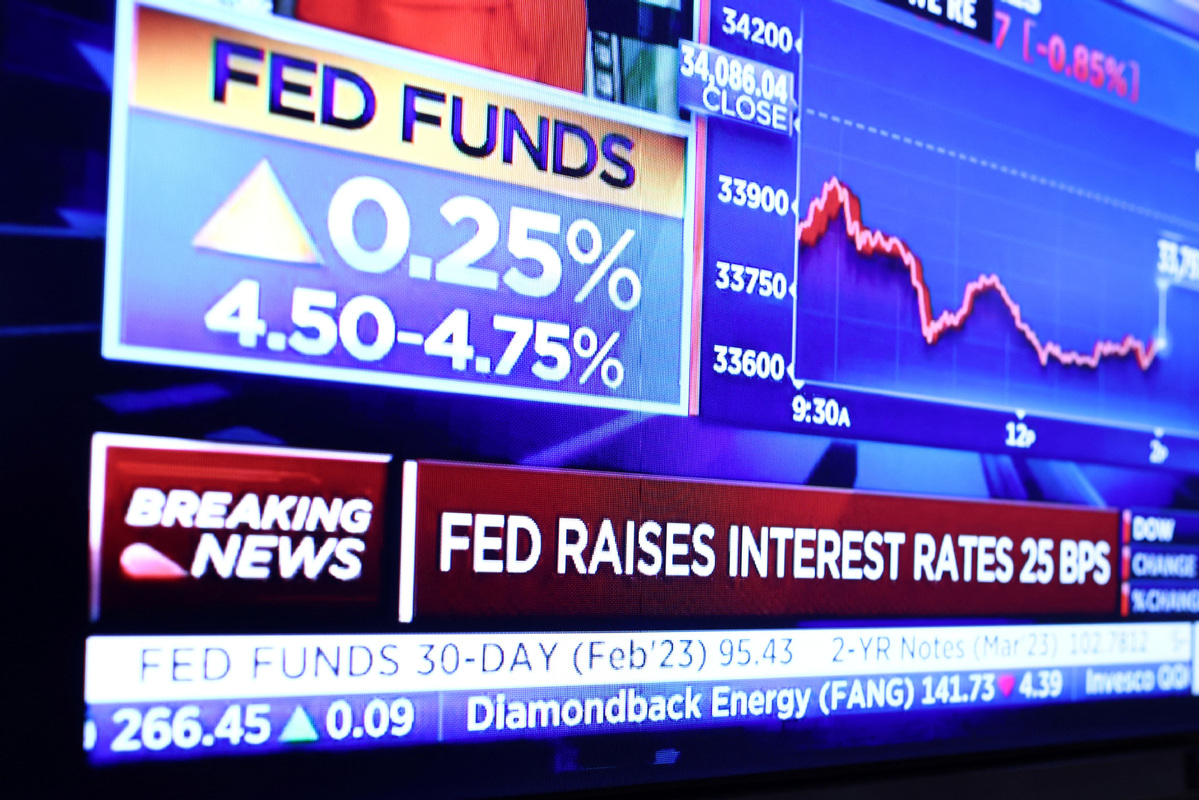US economy sends mixed signals but could avoid a hard landing


The US economy can't seem to decide whether it is headed into a recession or not.
Lately there have been some alarming signs, such as the tens of thousands of layoffs at major tech companies and on Wall Street.
But the most recent report on GDP, while a trailing economic number, showed the economy expanded by 2.9 percent in the fourth quarter.
"My interpretation of the latest numbers is that the economy is slowing down but not dramatically," said Raymond Hill, senior lecturer of finance at the Goizueta Business School of Emory University in Atlanta, to China Daily. "The slowdown seems evident from some of the detail in the GDP numbers: 1.5 percent of the 2.9 percent GDP growth was increases in inventories. This is not a healthy sign: goods produced but not purchased.
"Also, residential and business investment were both down. Declining investment is usually the leading element dragging the economy into a slowdown or recession," he said.
"At the same time, the labor market is still tight. Yes, lots of headline layoffs by big companies but still a historically low unemployment rate, and last week's unemployment claims falling slightly (not rising)," Hill said. "And, even discounting the inventory contribution, the economy grew in the fourth quarter.
"Right now, it looks to me like the Fed is on track to avoid a hard landing," he said.
In 2022, the Federal Reserve raised its policy rate by 425 basis points from near zero to a 4.25-4.50 percent range, the highest since late 2007.
On Wednesday, the Fed went with a smaller 25-basis-point hike, as expected, pushing its benchmark interest rate to range of 4.50-4.75 percent.
Fed Chair Jerome Powell said Wednesday after the Federal Open Market Committee meeting that, "We will need substantially more evidence to be confident that inflation is on a long, sustained downward path."
While Powell said that more increases will be coming, he did suggest that "the disinflationary process has started".
The 25-basis-point increase was decidedly restrained compared with a 50-point hike in December, which was preceded by four 75-basis-point increases.
"We're probably going to have higher interest rates around for quite a while. You would think eventually that would dampen consumption, although we haven't had the full effect yet," Harvard University economist Kenneth Rogoff told The Wall Street Journal.
US consumer spending did fall for a second straight month in December, and a report from the Commerce Department on Friday showed the smallest gain in personal income in eight months.
"Hammered by higher prices and borrowing costs, and feeling less wealthy, US households are cutting back and will likely contribute to a contraction in GDP in the first quarter," said Sal Guatieri, a senior economist at BMO Capital Markets. "The good news is that they are also pushing back against price hikes, which will help the Fed tackle inflation and limit further rate hikes."
Higher borrowing costs have cut demand for goods, which are often bought on credit. Balances on credit cards were up 15 percent in the third quarter, according to the Federal Reserve Bank of New York, the largest increase in more than two decades.
Consumer spending accounts for roughly 70 percent of the economy, which is why The Wall Street Journal said its poll of business and academic economists put the chance of a recession in the next 12 months at 61 percent.
But there is hope that the largest cost-of-living adjustment since 1981 for more than 65 million Social Security beneficiaries, which went into effect in January, will limit any curtailment in consumer spending.
While unemployment is near a five-decade low, big tech companies including Amazon, IBM, Google, Meta, Microsoft, Twitter have laid off thousands.
On Wall Street, Goldman Sachs, Morgan Stanley, Credit Suisse and Bank of New York Mellon have cut more than 15,000 jobs combined over the past few months, the Financial Times reported.
"The last bastion of strength is the labor market, but I don't think it can withstand all these other forces," Nationwide Chief Economist Kathy Bostjancic told the Journal.
The US economy added 223,000 jobs in December, the smallest gain in two years.
But unemployment was only 3.5 percent in December, and hourly wages rose 4.6 percent. There were about 10.5 million open jobs available in November, according to the Labor Department, the Journal reported.
Also, increased unemployment benefits and direct federal payments to households during the height of the COVID-19 pandemic drove personal savings to a new high.
Since then, that rate has fallen to around 3 percent of monthly income, from more than 30 percent at the start of pandemic lockdowns, the Journal reported.
"We estimate households still have about nine months of spending power if they continued to draw down excess saving at the pace they have the past six months," said Tim Quinlan, a senior economist at Wells Fargo.
Americans also have been struggling with soaring costs for everyday staples.
Jazzlyn Millberry, 33, a health-insurance claims analyst in Pickerington, Ohio, told the Journal that last fall her banking app showed that the cost of one month's groceries and household goods for her family of four had risen to $900, from about $600 or $700.
"I find myself now going to three or four different grocery stores just to get the best deals on things to save on costs," she said.
On the macroeconomic front, inbound volumes at the ports of Los Angeles and Long Beach in California were down more than 20 percent in December from a year earlier.
"Through last July, we saw over two years of unprecedented volume — averaging a peak season every month," Port of Los Angeles Executive Director Gene Seroka said in his Jan 19 State of the Port speech. "We started 2022 at that same frenetic pace, with 109 vessels in our queue, many of them waiting outside the breakwater for many days for available berth space."
By the end of 2022, there was "a disappointing 20 percent decline that began last August", he said.
Seroka attributed the slowdown to drawn-out labor talks, an early peak shipping season, the shifting of cargo to the East and Gulf coasts, and a nationwide slowing of imports.
Still, he said 2022 was a "silver medal year" for the port, which will record the second-highest cargo movement in its 115-year history.
Agencies contributed to this story.

































